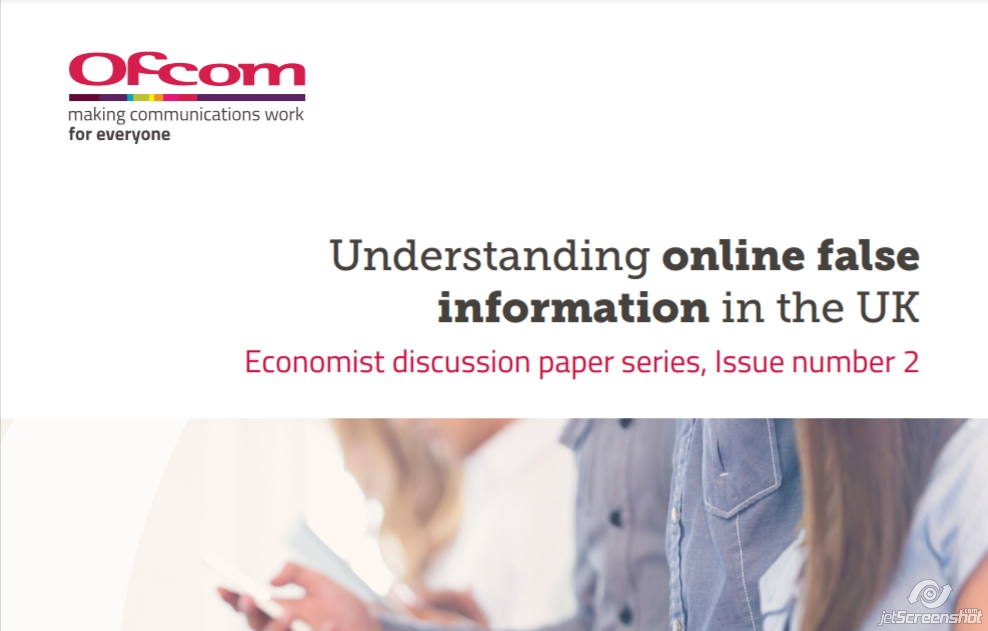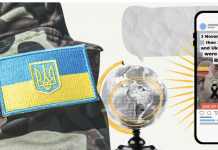
By Ofcom
As part of our duty to promote media literacy, we undertake research into how people access and use information online.
This paper contributes to the growing body of research on how to assess the availability and potential impact of false information online. We explore data sources and research techniques that can be used to investigate false information and present insights from this analysis.
Discussion paper: Understanding online false information in the UK (PDF, 3.6 MB)
Internet, social media, mobile apps, and other digital communication technologies have revolutionized people’s personal and working lives, generating significant benefits. They make information more readily available for people and in ways that were not possible before. However, there is growing concern about people’s exposure to false or misleading information online, and the
harm that this might cause to individuals and society. For example, the Reuters Institute recently reported that 63% of people in the UK are concerned about what is real and what is fake on the internet when it comes to news.
As part of our duty to promote media literacy, we undertake research into how people access and use information online.
This paper contributes to the growing body of research on how to assess the availability and potential impact of false information online. We explore data sources and research techniques that can be used to investigate false information and present insights from this analysis.
Our analysis uses NewsGuard’s assessment of websites that “repeatedly publish false information”. 3 This enables us to classify a large volume of websites using common criteria. We rely on third party data as it is not practicable at this stage for us to reach a view ourselves as to what constitutes false information online. However, we recognise that different definitions and methodologies can result in different classifications. The findings presented in this paper should therefore be interpreted as reflecting NewsGuard’s classification of false information, and not as an endorsement by Ofcom of NewsGuard’s underlying methodology or the resulting classifications.
We believe that our research provides a useful contribution to the debate on this issue and that regardless of definitions and classifications used, the insights gained from our analysis can inform future research.
What we have found – in brief
A range of factors allows false information to spread in new ways online. Lower production and distribution costs have supported the proliferation of media outlets and other providers of information. Online platforms enable people to easily access this range of information. Where online platforms give more prominence to content that captures people’s attention, unscrupulous and
politically motivated actors can take advantage of this to spread false information. Advances in online advertising, such as the automated allocation of online advertising space, have also inadvertently facilitated the monetization of false information. In response to this, many online platforms have started dedicating resources to preventing or limiting the spread of false information.
New research approaches can help us to understand false information online. The scale of the content generated and shared online has increased to such an extent that new approaches might be needed to analyze this issue effectively. This paper explores how new insights can be gained by using machine learning techniques to analyze a combination of large datasets capturing: (i) classification of websites that “repeatedly publish false information” according to NewsGuard (‘false information websites’); (ii) UK user traffic to individual websites by SimilarWeb; and (iii) content available on false information websites.
Our research approach provides insights about false information in the UK which can inform future research. Between September 2018 and August 2020, the 177 false information websites in our sample attracted on average 14 million visits a month in the UK – a small but still significant volume of online traffic. A majority of these visits were concentrated within a few larger websites,
with a long tail of smaller websites each receiving limited traffic. A significant fraction of traffic to the false information websites we analyze originates from people finding their way there via online platforms (such as search engines or social media).
Using machine learning techniques, we find that articles on the English language false information websites in our sample cover topics such as health, government, politics and conflict. While not all of these articles necessarily constitute false information, our analysis indicates that these websites report on topics that have the potential to harm individuals and society if they are falsely reported on.
Our analysis also suggests that levels of access to false information websites can vary by demographic group. For example, when compared to their share of the total UK population, younger age groups account for a disproportionate share of visits to the false information websites we analyze. Our analysis also indicates that male audiences account for a higher share of traffic to these
websites than female audiences. Websites that receive more traffic from female audiences are more likely to cover topics related to health compared to those with predominantly male audiences.
Further research using different methodologies and data can complement our approach. Our analysis has some limitations. It uses a website-level classification from NewsGuard, and we recognize that a different classification could yield different insights. As our assessment is at the website rather than the article level, our approach can only indicate the availability of content that might constitute false information. Richer datasets featuring article-level classification and traffic data would provide a more detailed understanding of false information consumed by UK users. Our analysis is also limited to textual data on websites. Analyzing the consumption and topics of false information on other media (such as video) or in different settings (such as social media) could
broaden our understanding.
By Ofcom




